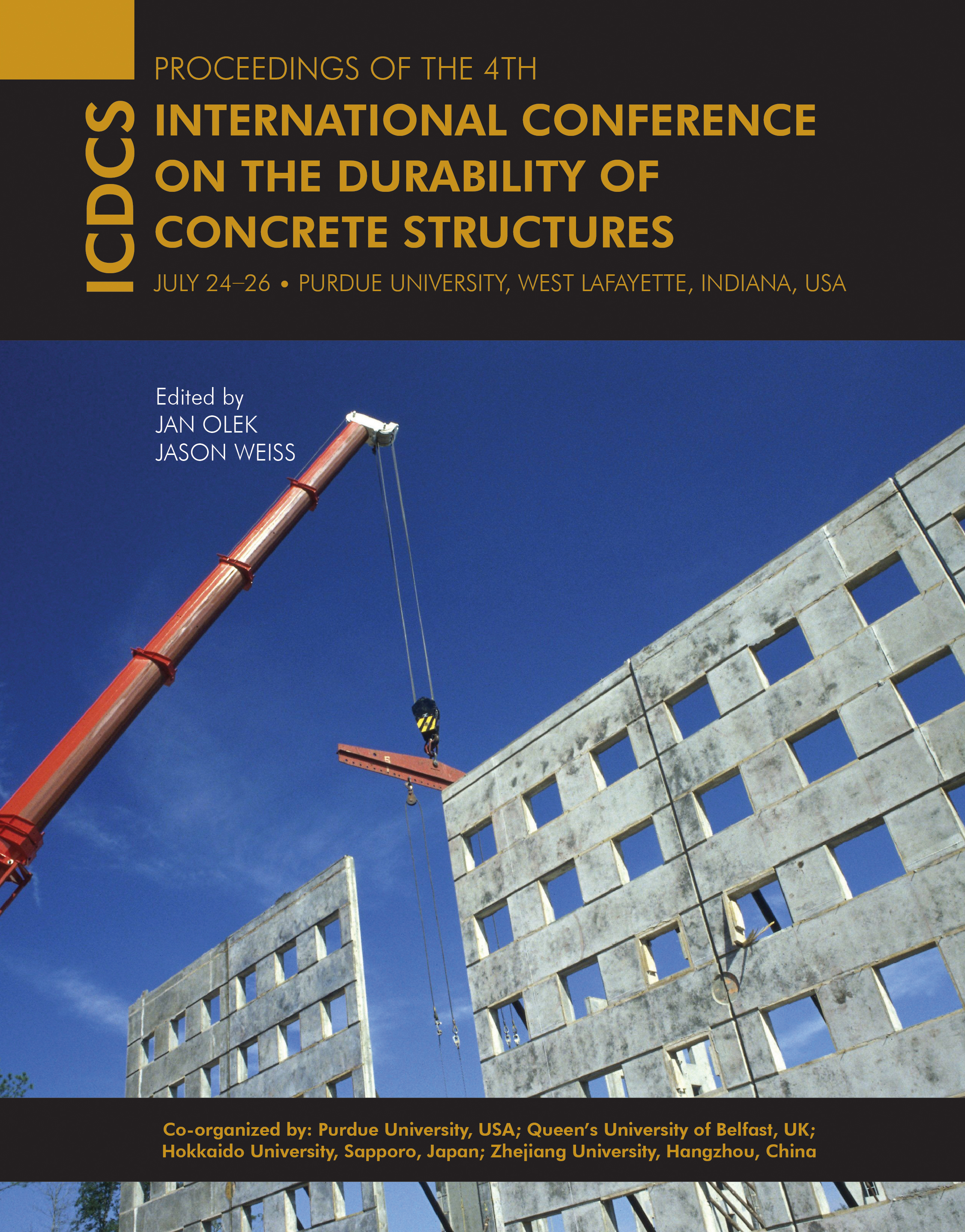Abstract
This paper explores the usage of microfocus X-ray computed tomography (CT) for visualization and quantification of diffusion phenomena in cracked concrete. Mortar specimens of varying shapes (prismatic and cylindrical), crack types (artificial and splitting tensile), and binder compositions (OPC and fly ash) were prepared. Cesium carbonate (Cs2CO3) was used as a tracer in the diffusion test because it has high X-ray absorption due to its high atomic number and thus contrasts with mortar and air voids in the CT images. Image processing and analysis was carried out to visualize and quantify the diffusion behavior in 3D space. In addition, the profile of the solute concentration in cracked mortar was determined based on the measured CT numbers. Fick’s second law could then be used to determine the diffusion coefficient of the solute. It was found that the diffusion coefficients along the crack were on the scale of 10-8 to 10-11 m2/s, which implies that the transport mechanism along the crack was not solely by diffusion but controlled by the degree of saturation as well as the crack opening width. Diffusivity in the uncracked matrix, however, was reduced to the scale of 10-12 m2/s. Fly ash mortar exhibited a lower diffusion coefficient in the uncracked matrix compared with the OPC mortar with an equivalent crack opening width.
Date of Version
July 2014
DOI
10.5703/1288284315403
Recommended Citation
Henry, Michael; Sugiyama, T.; and Darma, I. S., "Visualization and Quantification of Solute Diffusivity in Cracked Concrete by X-Ray CT" (2014). International Conference on Durability of Concrete Structures. 7.
https://docs.lib.purdue.edu/icdcs/2014/transportproperties/7
Included in
Visualization and Quantification of Solute Diffusivity in Cracked Concrete by X-Ray CT
This paper explores the usage of microfocus X-ray computed tomography (CT) for visualization and quantification of diffusion phenomena in cracked concrete. Mortar specimens of varying shapes (prismatic and cylindrical), crack types (artificial and splitting tensile), and binder compositions (OPC and fly ash) were prepared. Cesium carbonate (Cs2CO3) was used as a tracer in the diffusion test because it has high X-ray absorption due to its high atomic number and thus contrasts with mortar and air voids in the CT images. Image processing and analysis was carried out to visualize and quantify the diffusion behavior in 3D space. In addition, the profile of the solute concentration in cracked mortar was determined based on the measured CT numbers. Fick’s second law could then be used to determine the diffusion coefficient of the solute. It was found that the diffusion coefficients along the crack were on the scale of 10-8 to 10-11 m2/s, which implies that the transport mechanism along the crack was not solely by diffusion but controlled by the degree of saturation as well as the crack opening width. Diffusivity in the uncracked matrix, however, was reduced to the scale of 10-12 m2/s. Fly ash mortar exhibited a lower diffusion coefficient in the uncracked matrix compared with the OPC mortar with an equivalent crack opening width.





